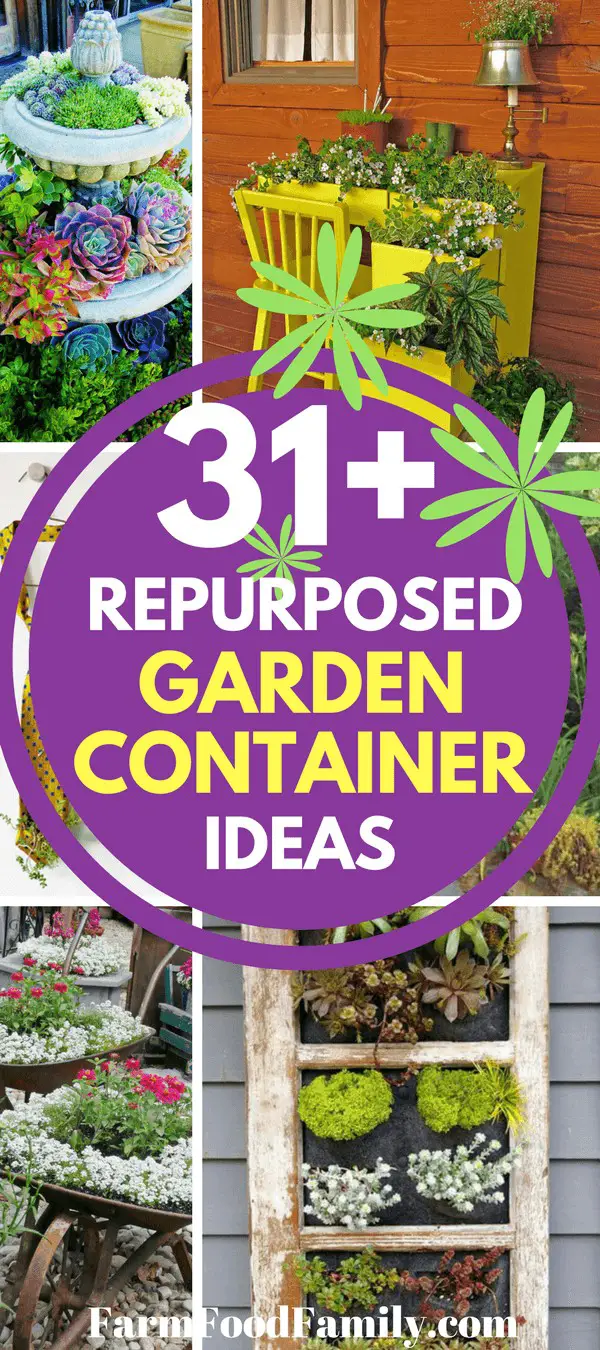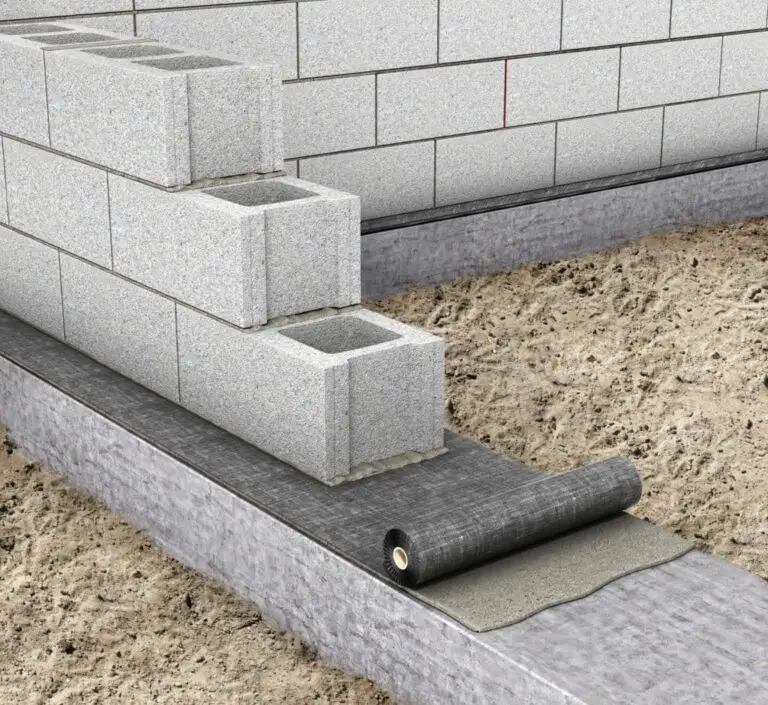How To Use Herbs As Edging
When it comes to creating a beautiful and functional border for your herb, flower, or vegetable garden, growing edible plants can be an excellent choice. Not only do they add visual appeal, but they also provide a natural barrier that helps keep weeds at bay. Many herbs make attractive edging options, which can be used in combination with other gardens. Some popular choices include Onion Chives, Garlic Chives, Basil, Feverfew, Germander, Horehound, Hyssop, Rosemary, Sage, and Savory.
Thyme is another great option that can thrive on the edge of your garden. For more inspiration on growing herbs to use as edging, be sure to check out our related posts.
Onion Chives (Allium schoenoprasum)
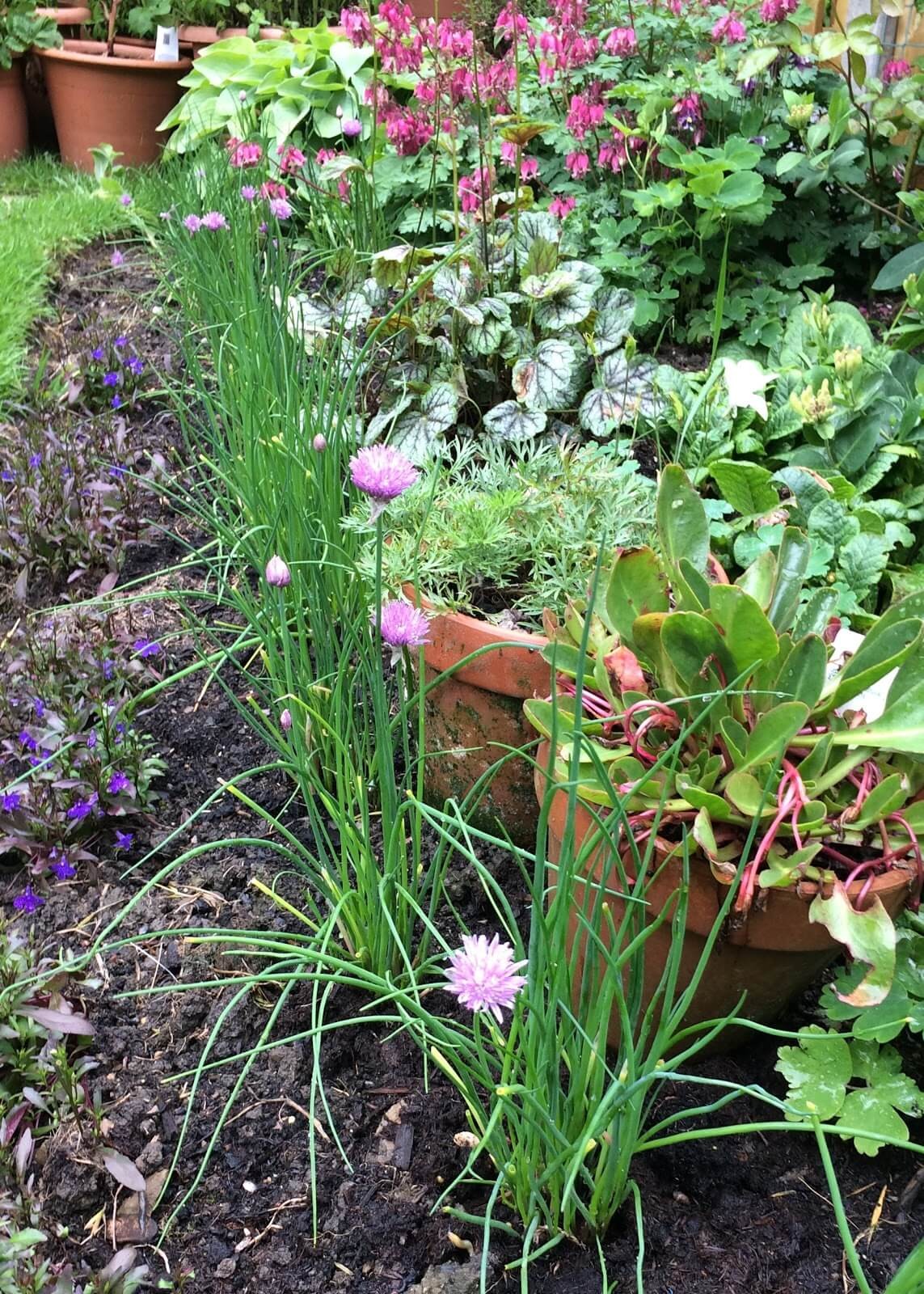
The humble Wild Onion (Allium canadense) is a delightful addition to any garden, offering a mild onion flavor whether enjoyed fresh, dried, or cooked. Its striking purple flowers reach heights of 12-18 inches, making it a charming sight to behold. As a perennial, this hardy variety thrives in zones 3-9 and requires minimal maintenance. When harvesting the blooms, be sure to clip off the flowers before they go to seed to prevent self-sowing.
This will encourage the plant to focus its energy on producing a lush clump of foliage rather than spreading its seeds. Growing from seed is also a straightforward process – simply sow 10-12 seeds per plug and avoid thinning them out, which will result in a beautiful, dense clump to start with.
Garlic Chives (Allium tuberosum)
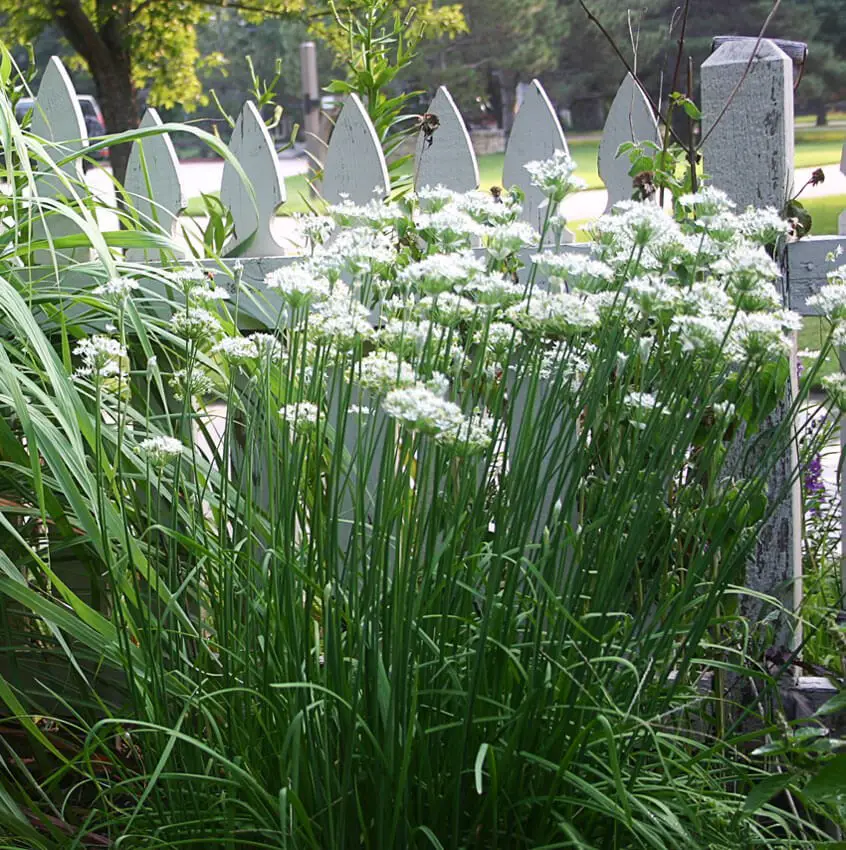
When cultivating garlic, incorporating chopped leaves can result in a uniquely pungent flavor. This variety of garlic grows between 12-18 inches tall and produces white flowers. Due to its perennial nature and hardiness in zones 3-9, it’s an ideal choice for many gardeners.
To maintain control over the plant’s propagation, be sure to remove any flowers before they have a chance to go to seed, thus preventing self-sowing.
This type of garlic is relatively easy to grow from seeds, and when sown at a density of 10-12 plugs per area, it will form a dense clump that can serve as the foundation for your crop.
Basil (Ocimum)
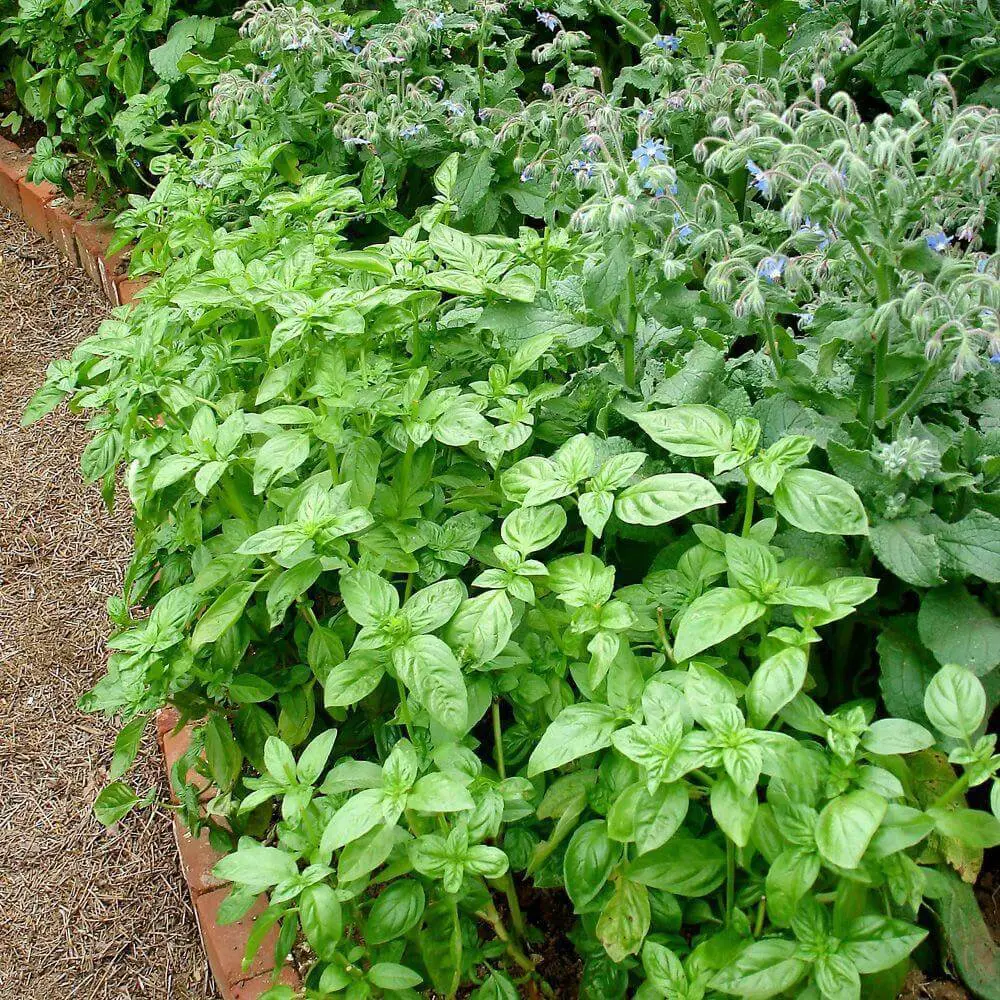
When it comes to edging, the compact leaved varieties of basil are ideal choices. Two popular options include ‘Pistou’ and ‘Spicy Bush’, with ‘Pistou’ being the more diminutive of the two, reaching heights of 6-8 inches. In contrast, ‘Spicy Bush’ will grow slightly taller, reaching a maximum height of 8-14 inches. To achieve a lush, full appearance, sow 7 seeds per plug and thin to 5, which will allow for a nicely rounded globe shape.
Both varieties are well-suited for small pots or mixed containers, making them perfect for adding a pop of color and fragrance to any outdoor space.
Feverfew (Tanacetum parthrnium)
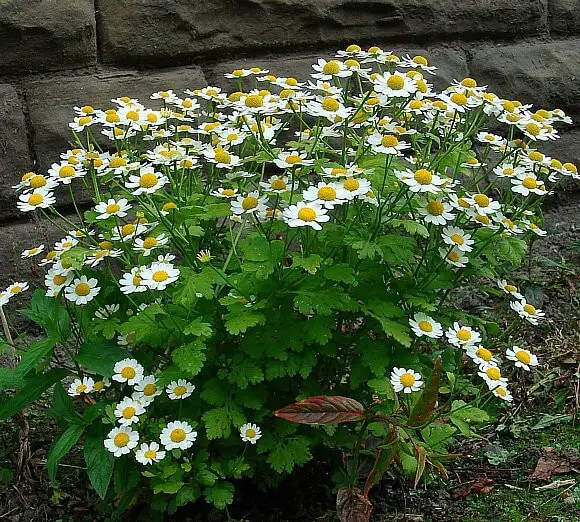
For those looking to incorporate Feverfew into their landscaping, the ‘White Stars’ variety is an excellent choice when it comes to using it as a border plant. This particular strain produces masses of double white flowers that bloom at a height of 7 inches, making it a stunning addition to any garden bed or border. As a perennial, Feverfew is well-suited for growth in zones 5-9 and can be easily propagated from seed.
Its hardiness makes it an excellent option for gardeners looking to add some low-maintenance beauty to their outdoor spaces.
Germander (Teucrium chamaedrys)
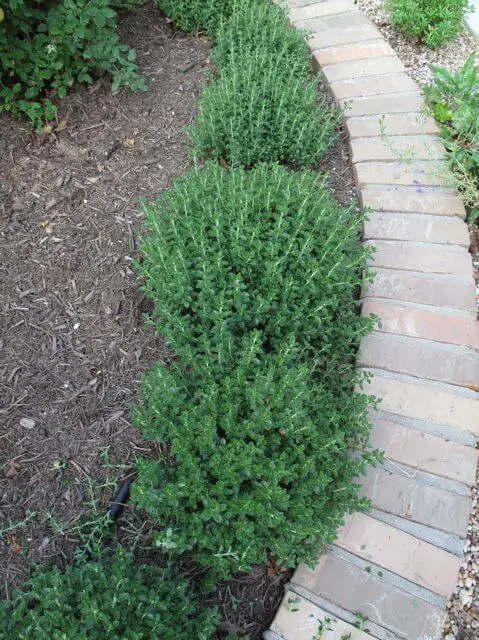
The germander, a low-growing evergreen shrub, boasts deep green leaves and a symmetrical habit that reaches heights of about 12 inches. A highlight of its appearance is the stunning display of rosy-purple flowers it produces during the summer months.
As a hardy perennial, the germander thrives in zones 4 through 9. While seeds can be used for propagation, many gardeners find it more effective and reliable to start with a mature plant and multiply it through cuttings.
Horehound (Marrubium vulgare)

Horehound makes an excellent choice for adding a decorative border to your garden, but it does require some maintenance. To keep the plant compact and bushy, regular pinching back is necessary. As a perennial, horehound thrives in zones 4-8, making it a great option for many gardeners. While seed starting is possible, propagation through cuttings from mature plants tends to yield more reliable results.
Hyssop (Hyssopus officinalis)
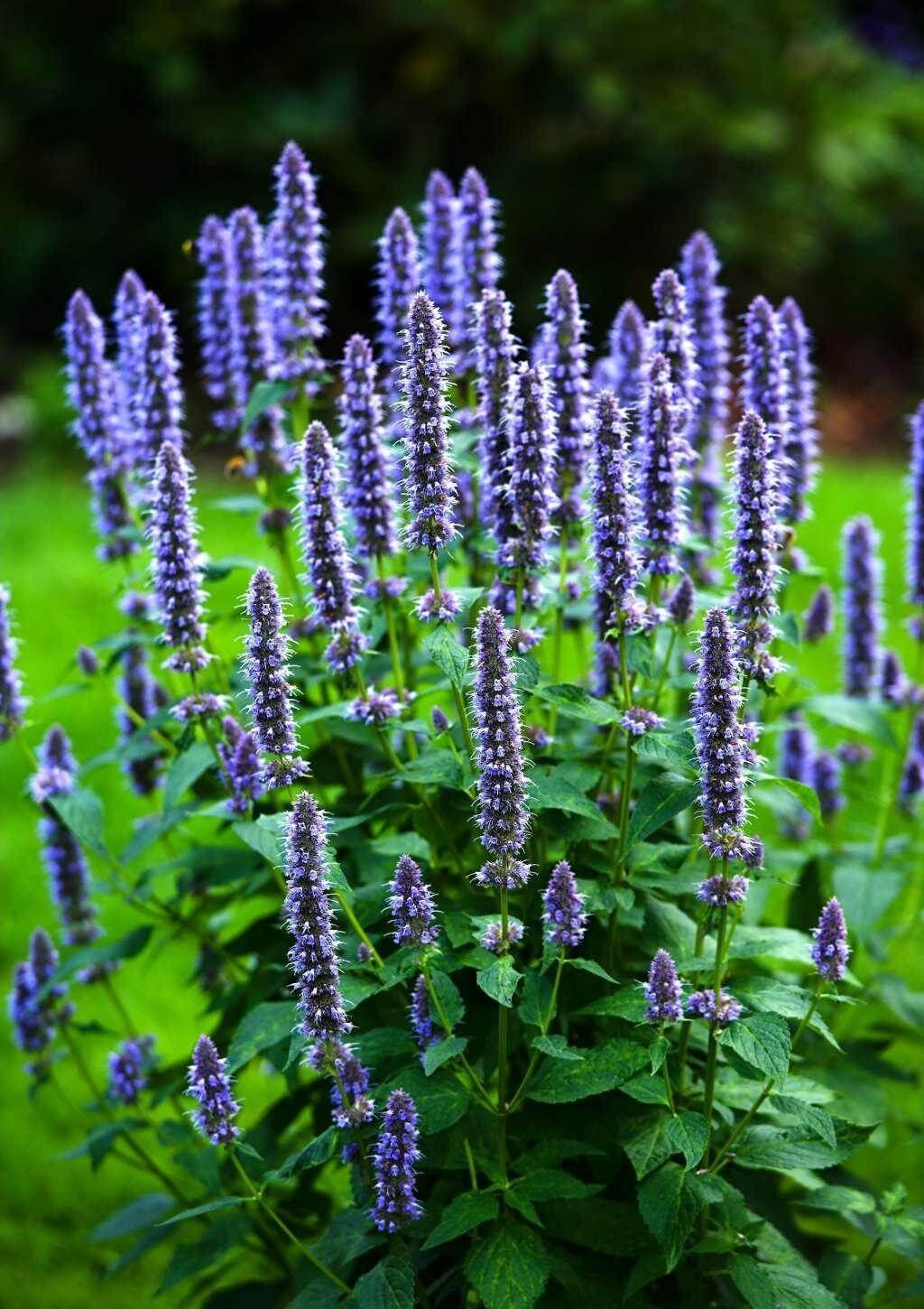
The distinctive minty aroma of this plant is accompanied by vibrant purple flowers. Reaching a height of approximately 18 inches, it’s ideal for cultivating bushiness through pinching. As a hardy perennial, it thrives in zones 3-9. While seeds can be used to propagate, it’s recommended to purchase mature plants and rely on cuttings for propagation.
Rosemary (Rosmarinus officinalis)
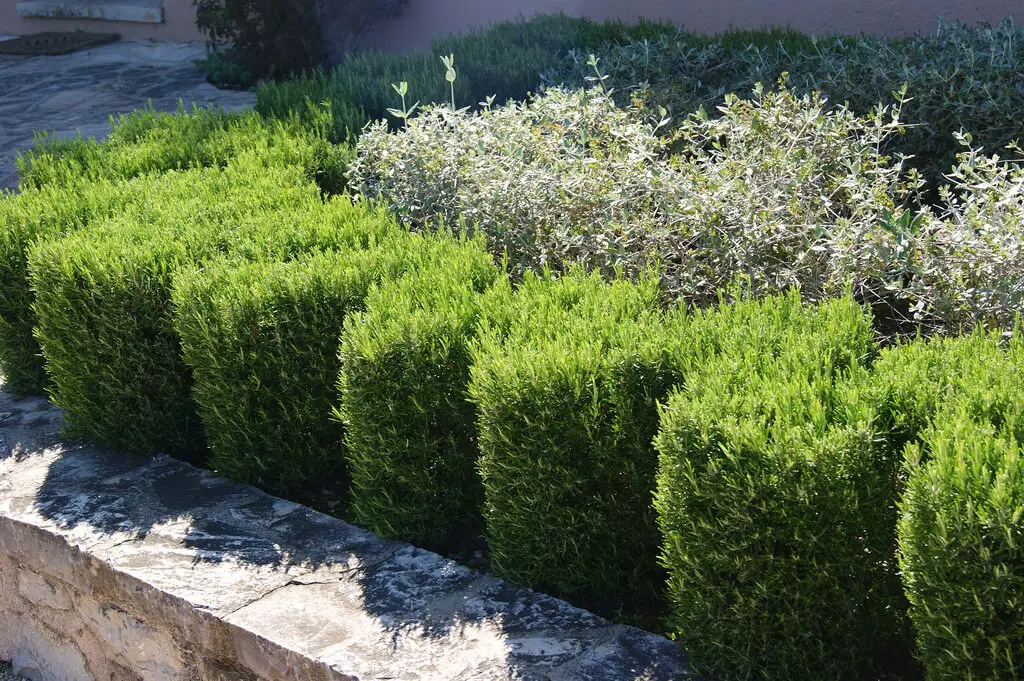
A staple herb in many gardens, lavender is a versatile plant that can add beauty as well as fragrance. When pruned to promote side growth, it makes an excellent choice for edging borders. Its hardiness ranges from USDA zone 7 to 10, making it suitable for gardeners in these regions. For those looking to grow this herb, seeds are an option, but propagating from cuttings is often the more reliable and rewarding approach – especially if you’re seeking specific cultivars.
Purchasing mature plants and taking cuttings can be a great way to get started.
Sage (Salvia officinalis)
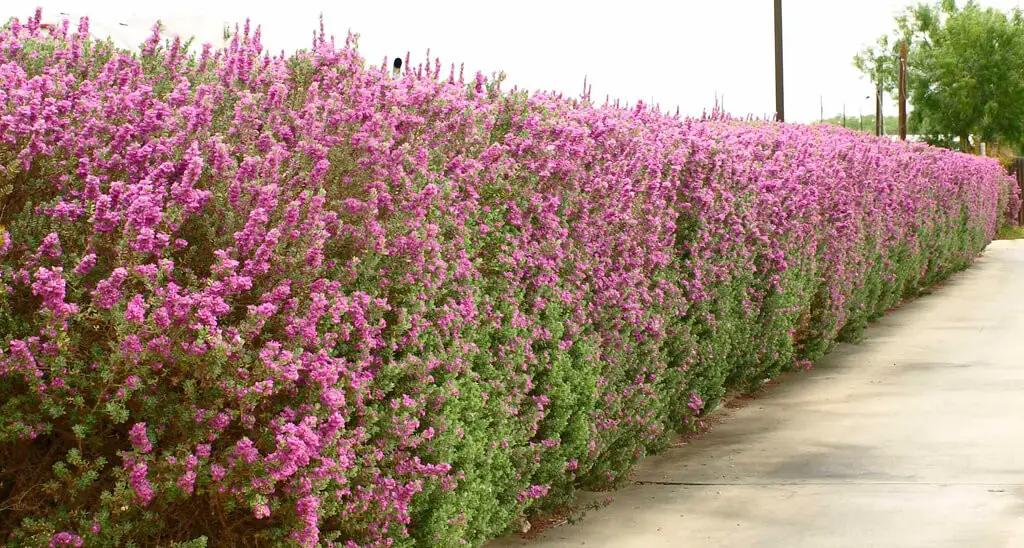
For gardeners seeking a low-maintenance yet visually appealing option, the dwarf variety of sage (Dwarf Sage) stands out as an excellent choice for use as an edging plant. A perennial by nature, Dwarf Sage boasts a compact growth habit that reaches only 15 inches in height, making it perfect for borders and edges. Moreover, its hardiness zone range of 5-8 ensures that this lovely variety can thrive in temperate climates.
Savory (Satureja Montana)
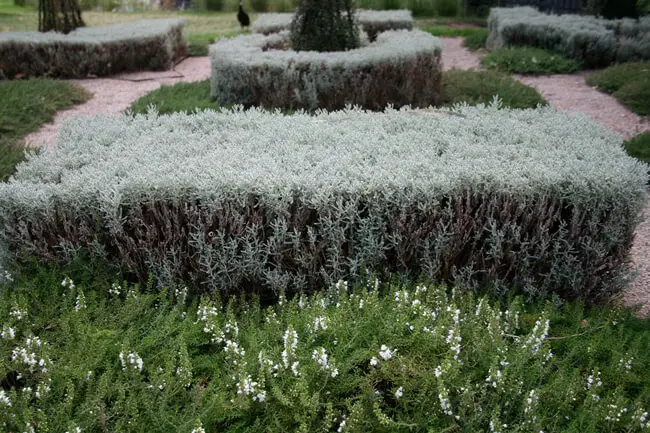
Winter Savory boasts a pungent flavor profile, distinguished by its compact, aromatic leaves that are noticeably smaller than those of summer savory. A perennial in nature, it grows to heights of around 8-10 inches. Notably resilient, Winter Savory thrives in zones 5-8 and is relatively straightforward to cultivate from seed. For optimal results, sow six seeds per plug and thin out to four, which will yield a well-proportioned, bush-like specimen.
Thyme (Thymus vulgaris)
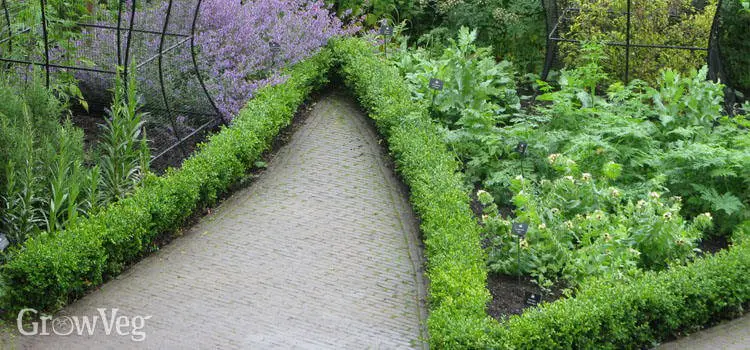
When it comes to adding thyme borders, it’s generally best to opt for upright varieties, which offer a more compact and visually appealing display. Most thyme species are hardy perennials that thrive in zones 5-9, making them an excellent choice for many gardeners. Two popular options for edging plants include English Thyme and Silver Thyme, both of which are well-suited to adding a fragrant and attractive touch to borders.


